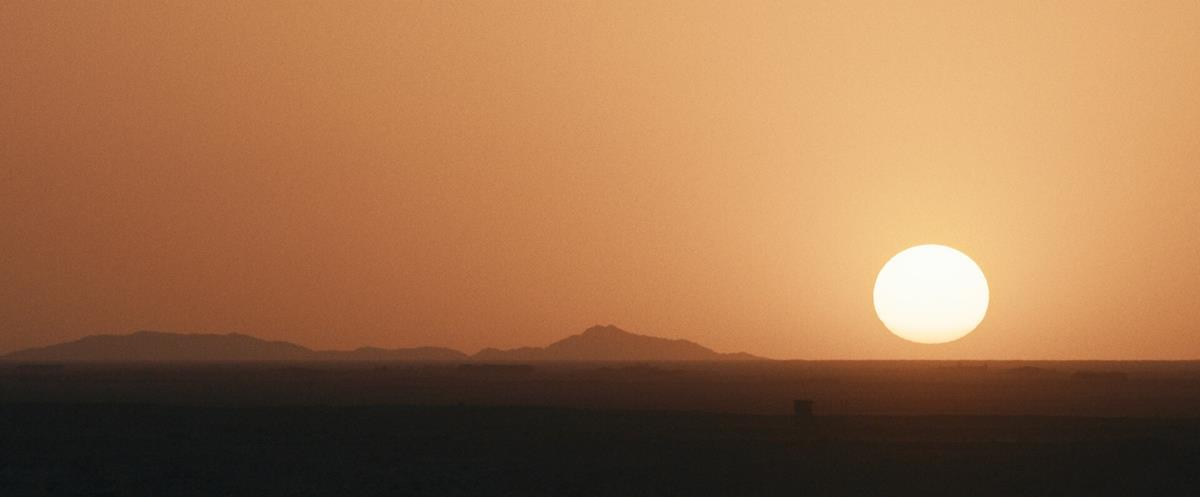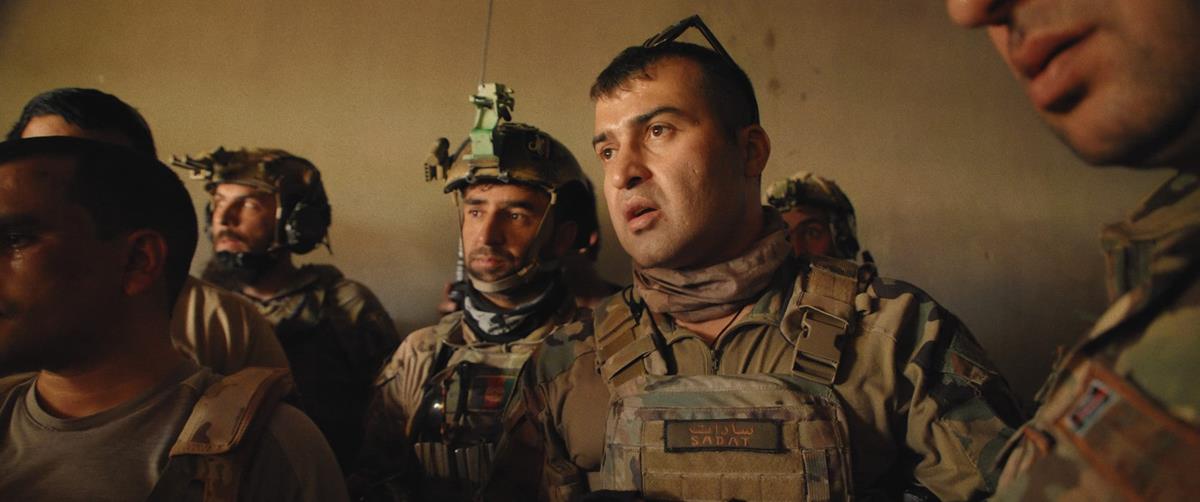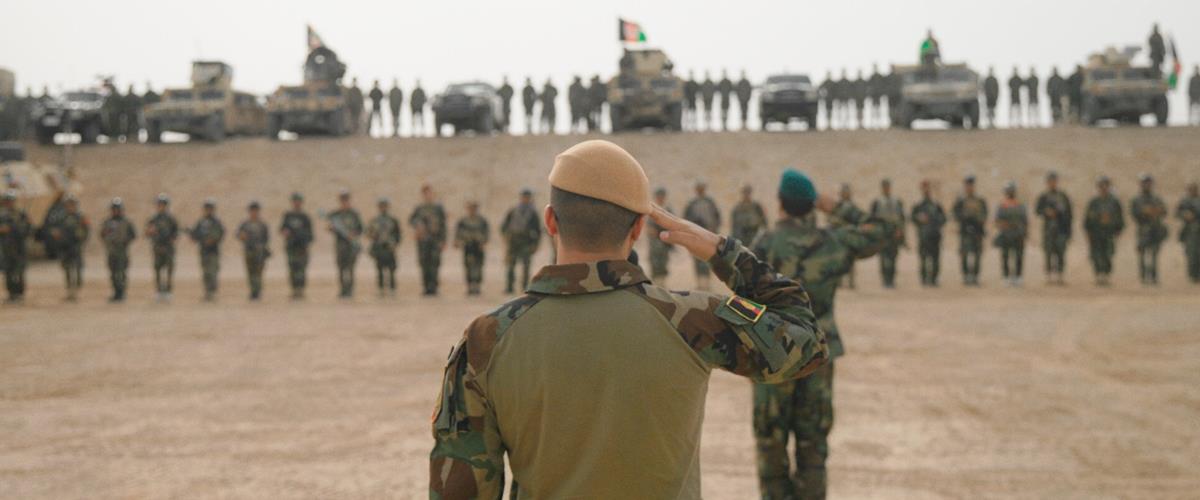TL;DR
- The Oscar-nominated filmmaker Matthew Heineman travels to Afghanistan to capture the turmoil as American troops pulled out in August 2021.
- The original intent of the film was for a holistic look at modern-day military deployment, then pivoted to tell the story of the final acts of the longest war in US history.
- Heineman and his crew risked their lives to tell the story of the airlift from Kabul and its aftermath as the Taliban took control of the city.
Director Matthew Heineman’s latest documentary captures the final months of the 20-year-long war in Afghanistan. The film begins by covering the story of a group of Green Berets supporting the Afghan National Army. Once they are ordered to pull out, an operation referred to as “retrograde,” Heineman then focuses the film on a young Afghan general, General Sami Sadat, who is desperately fighting to protect his country from a Taliban takeover.
Produced by National Geographic, Retrograde launched at Telluride and was nominated for Best Political Documentary at the Critics’ Choice Documentary Awards. The film also won the Producing Award at DOC NYC Feature and is on the shortlist for an Oscar nomination. The documentary feature is available for streaming on Disney+.
In military parlance, the term retrograde can mean several things, among them withdrawal from a war zone, but the ambiguity of the title is calculated.
“It’s a historical document of this final chapter in the war in Afghanistan,” the director tells Sophia A. McClennen at Salon. “It’s also an allegorical tale for a dynamic that has happened throughout history and will continue to happen long in the future: going into a country to fight a war, then leaving the country, and the effect that process has on everyone involved.”
READ MORE: “Taking sides is not my job”: “Retrograde” filmmaker Matthew Heineman on documenting a war’s end (Salon)
Heineman is known for his Oscar-nominated doc Cartel Land and his narrative feature A Private War. He has also made docs about ISIS in Syria, the opioid crisis, and human trafficking. Each time, he explains, “I try to take this large complex subject that has already been framed by news headlines and stats and humanize it. I try to put a human face to it. And that’s certainly what I try to do with Retrograde.”
The intimacy and access in Retrograde resulted from a tenacious effort to embed with US Army Special Forces, better known as the Green Berets. The access was enabled by producing partner Caitlin McNally, but even then the process took years to be approved by the Pentagon.
By the time that happened, the United States was preparing to exit Afghanistan. Two months after the film crew landed in Afghanistan, President Biden pulled out the troops.
Heineman didn’t know what to do. “I have no film here,” he related to IndieWire’s Anne Thompson. “We’d been shooting for two months, and there’s no real arc to what’s happening.”
READ MORE: The Documentarian Who Doesn’t Know How to Stop Putting Himself in Danger (IndieWire)
“It wasn’t a fait accompli that the Afghans were going to lose to the Taliban at that point, so there was a sort of blank of where this story was going to go,” he told Stephen Saito at Moveable Feast.
READ MORE: Matthew Heineman on Moving a Conversation Forward with “Retrograde” (Moveable Feast)
The filmmakers decided that Afghan General Sadat could emerge as a central character, and he agreed to cooperate. “We completely pivoted the film to focus on him and look at the end of the war through his eyes,” Heineman told Thompson.
The film vividly conveys the feelings of the Green Berets and their Afghan allies after President Biden’s announcement.
“There’s a scene in the film where they tell their Afghan counterparts that they’re leaving,” Heineman tells Matthew Carey at Deadline. “It’s quite a poignant scene where their faces all say more than words can ever say. That motif of faces was something that was very purposeful in the shooting of the film and the cutting of the film, really holding on faces for a really long time.”
READ MORE: Matthew Heineman Returns To Oscar Race With ‘Retrograde,’ Searing Doc On U.S. Military’s Last Months In Afghanistan, And What Happened Next (Deadline)
He could have created a series: Heineman returned to the editing room with 1,300 hours of footage. Instead, he edited the story to 94 taut minutes.
Speaking again to Salon, he adds, “In interviews, people can lie, either because they’re nervous or they want to spin a narrative. But faces don’t lie. That explains the motif that we developed both in the field and also in the editing room of holding on faces for a really long time.”
Some critics have noted that the film looks slick, with a sheen and a composition that wouldn’t look out of place, in say, Ridley Scott’s Black Hawk Down.
Variety’s Peter Debruge, for example, notes that Heinman “brings back hi-def vérité footage that looks sharper and more artfully framed than most Hollywood features.”
READ MORE: ‘Retrograde’ Review: Matthew Heineman Risks His Neck to Record America’s Exit From Afghanistan (Variety)
“Am I supposed to not hone my craft and grow as an artist?” Heineman responds to Salon. “To me, the aesthetics are really important. My goal always at every step along the way, is I want you to feel what it’s like to be in the control room as you’re calling in an airstrike or drone strike. I want you to feel like what it’s like to be in a Blackhawk helicopter as rockets are being shot at you. I want you to feel what it’s like to go to the front lines of a war zone as your country is crumbling and there’s a lack of communication and information.”
Heinman put himself in some life threatening situations but denies being an adrenaline junkie. “I’m not drawn to the danger,” he tells IndieWire. “I’m drawn to people who have big stakes. I don’t enjoy being shot at.. I guess I am drawn, but I’m not quite sure exactly why.”
READ IT ON AMPLIFY: Filmmaking Community: How “The Territory” Put Its Subjects Behind the Camera
READ IT ON AMPLIFY: “All the Beauty and the Bloodshed:” Art and Activism (on Both Sides of the Camera)
He recounted the filming of a scene where he’s backseat in a helicopter in a particularly dangerous area. The Taliban began firing. He tells Dano Nissen at The Knockturnal, “When you’re in the helicopter and rockets are being shot at you there is no object button. There is no I want to go home. You are there. You’re in it.”
He continued, “In those situations the only thing I have agency over is my camera. And that is what I choose to focus on. I focus on framing and exposure. I’m mixing sound when I’m filming. Those are things I can control. If I’m going to risk my life to get a scene I’m going to get it right.”
READ MORE: “Retrograde” Director on Filming Under Fire in Afghanistan (The Knockturnal)
Accompanying Heineman were veteran combat cinematographers Timothy Grucza and Olivier Sarbil, supported by field producers and translators, but the scenes depicting the chaotic and hazardous exodus from Kabul airport were shot by just Grucza and Heinman alone.
“Never in my career have I ever felt something as strong as what I felt being at the Abbey Gate as thousands of Afghan civilians were desperately trying to flee, and as 18-year-old Marines, who weren’t even alive during 911, were making these impossible ‘Sophie’s Choice’ decisions on who to let in and who not to,” he relates to Moveable Feast. “The Taliban was watching at gunpoint a hundred yards away, as ISIS was circling around us in suicide vests, waiting to attack, which happened 12 hours later in that very spot. All I could think about was, ‘What have we done here?’ ”
Of course, he could escape with his American passport back home to NYC. He understands the privilege of his circumstance and the responsibility that comes with it.
“On one level, I think the film is a historical record of this turning point in history, but it’s also an attempt to get people to care and feel just a little bit more and understand this conflict in a way they might not have otherwise.”
To Salon, he adds, “I think the film is a living, breathing document of the massive chasm between the ideological reasons for going to war and the reality of those who are actually fighting it in real time.”









